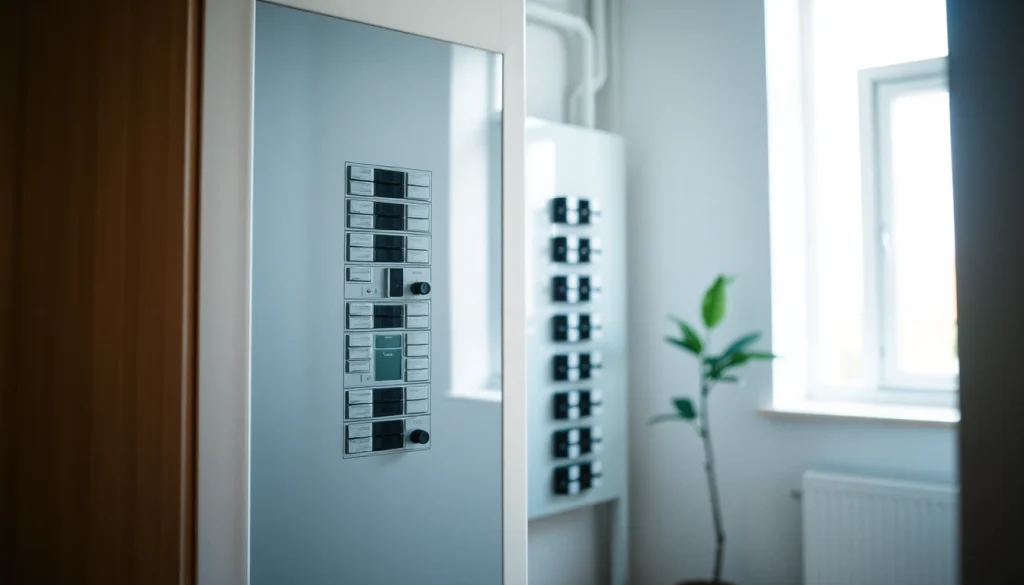Understanding the Basics of Electrical Panel
The importance of understanding your home’s electrical system cannot be overstated, especially when it involves the Electrical Panel. This component acts as the central hub for your household’s electrical supply, managing the flow of electricity to various circuits throughout your home. Without a functional and well-maintained panel, your home may not receive adequate power, increasing the risk of electrical fires and appliance damage. Understanding the basics of electrical panels is the first step toward ensuring the safety and functionality of your electrical system.
What is an Electrical Panel?
An electrical panel, also referred to as a breaker box or service panel, is a metal box that contains numerous switches known as circuit breakers. These breakers serve as safety devices that control the electricity flow to different areas of your home. When a circuit gets overloaded, the breaker trips, stopping the electricity from flowing and helping to prevent electrical fires. In essence, the electrical panel plays a crucial role in protecting your home from electrical hazards.
Key Components of an Electrical Panel
Understanding the key components of an electrical panel can be beneficial for homeowners. Here are the primary elements:
- Main Breaker: This is the switch that controls power to the entire electrical panel. It can shut off all electricity to the circuits.
- Circuit Breakers: These individual switches monitor the electrical flow and stop it when there’s an overload.
- Bus Bars: Metal strips that distribute electricity to the circuit breakers.
- Grounding System: Helps to prevent electrical shock by providing a safe route for excess electricity to follow in case of a fault.
- Neutral Bus Bar: A bar that connects all the neutral wires coming from the breakers.
Common Types of Electrical Panels
Electrical panels can vary based on their capacity and design. Here are some of the common types:
- Subpanels: These are used to supply electricity to a specific area or purpose within a home, usually because the main panel is overloaded.
- Smart Panels: These modern panels allow homeowners to monitor their energy use and optimize consumption through smart technology.
- Main Breaker Panels: These are usually the primary panels in a home where the main service line connects.
- Load Centers: A more simplistic form of the main panel, focusing on distributing electricity without many extra features.
Signs Indicating Electrical Panel Upgrade
Maintaining an effective and efficient electrical panel is critical to the safety and functionality of your home. Here are some signs that may indicate it is time to consider upgrading your electrical panel:
Frequent Circuit Breaker Trips
If you notice that your circuit breakers are tripping frequently, it could be a sign that your panel is struggling to handle the demand of your home’s electrical load. Frequent breaker trips can signal that your panel is overloaded and may need upgrading to accommodate additional circuits or modern appliances.
Inadequate Power for Home Needs
As our reliance on technology increases, so does our power demand. If you find yourself constantly losing power or having to fuse circuits to accommodate new devices, it might be necessary to assess your electrical panel capabilities. Homes built over a decade ago typically have panels rated for 100 amps, which may no longer be sufficient for modern energy demands.
Outdated or Faulty Panels
Older panels, especially those produced by manufacturers with a history of safety issues, should be replaced. Evidence of rust or circuit breakers lacking a “trip” mechanism can be a major safety concern. Upgrading an outdated or incorrectly functioning electrical panel not only enhances safety but can also improve the reliability of your service.
Benefits of Upgrading an Electrical Panel
Upgrading your electrical panel offers a myriad of benefits that go beyond mere safety. Understanding these benefits can help you make informed decisions about your electrical system:
Increased Home Safety
Safety is perhaps the most critical reason to upgrade your electrical panel. An updated panel can mitigate risks associated with electrical fires due to overload or faulty wiring. Modern panels are designed to meet contemporary safety standards, significantly reducing the likelihood of dangerous situations.
Enhanced Electrical Efficiency
Modern electrical panels provide more efficient energy distribution, which can result in reduced energy costs. With an upgraded panel, the system can more evenly distribute power resources, minimizing energy waste and optimizing appliance performance.
Improved Home Value
For homeowners considering selling their property, an upgraded electrical panel can enhance the home’s value. Prospective buyers often look for assurances that home systems are up-to-date and compliant with safety standards. Upgrading your panel can serve as a selling point to increase marketability.
Steps to Upgrade Your Electrical Panel
Upgrading an electrical panel is often not a DIY project and should be approached methodically. Here are the key steps:
Assess Your Electrical Needs
The first step in upgrading your electrical panel is evaluating your current and future electrical needs. Consider all appliances, from larger items like HVAC systems to smaller items like gaming consoles. Proposing a load analysis helps accurately determine the amperage and configurations needed for your panel.
Consulting with Professionals
After assessing your electrical demands, the next logical step is to consult with a licensed electrician. Professionals can evaluate the current state of your panel, recommend appropriate upgrades, provide cost estimates, and ensure that the work complies with local building codes.
Permitting and Safety Considerations
Most communities require permits for electrical upgrades. Your electrician should handle permitting, but homeowners need to be aware of safety regulations. Ensuring that your new electrical panel is installed according to guidelines is crucial for long-term safety and performance.
Maintaining Your Electrical Panel
Once your electrical panel is upgraded, regular maintenance is vital to ensure its ongoing performance and safety:
Regular Inspections and Upkeep
A regular inspection schedule is essential. Homeowners should familiarize themselves with their electrical panel and schedule annual visits with a licensed electrician to assess for any wear and potential issues.
Common Maintenance Tasks
Regular upkeep includes ensuring that the panel is clean, checking for blind spots, tightening any loose connections, and inspecting the breakers for any signs of wear or corrosion. By taking a proactive approach to maintenance, you can prevent larger issues from developing.
Knowing When to Seek Professional Help
Some electrical panel issues require the attention of a professional. Signs such as buzzing noises, flickering lights, or burnt odors emanating from the panel indicate that immediate attention is necessary. Prompt professional help can save time and prevent costly repairs down the line.


